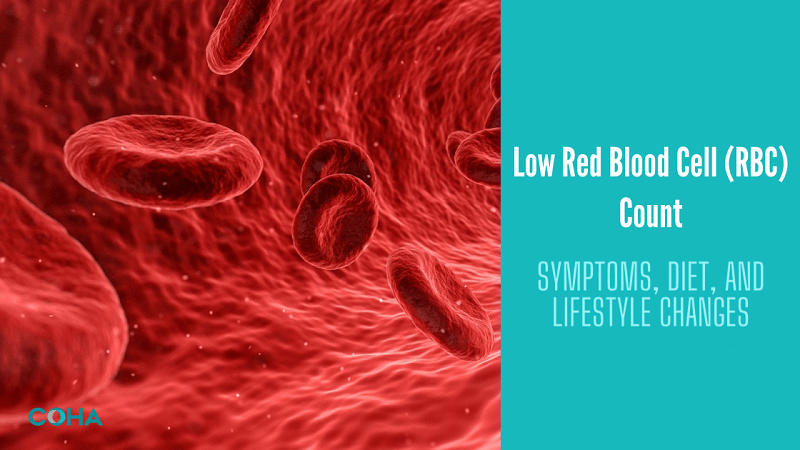


Red blood cells (RBCs) are a crucial component of your blood. RBCs live in your body for about 115 days. Afterward, they go to the liver, where they disintegrate, and your body reuses their nutrients back into your cells. These cells contain hemoglobin, which is a protein responsible for blood’s color and carrying oxygen around the body.
If your body does not receive sufficient nutrients, RBCs may be malformed or die off quicker than the body can replace them. If you have a low red blood count or anemia, your body will work harder to carry oxygen to the cells.
If not treated, anemia can lead to serious health complications such as heart failure, pregnancy-related complications, low immunity, etc. Therefore, it’s important to keep your RBC count regulated.
Generally, insufficient nutrient levels in the body can lead to anemia. Therefore, eating nutrient-rich foods can help your body produce enough red blood cells to help prevent anemia.
You should consume foods that are rich in the following nutrients:
Vitamin B-12 is essential for creating new red blood cells. Low vitamin B-12 levels prevent RBCs from maturing, leading to a condition called megaloblastic anemia. Therefore, eat foods rich in vitamin B-12, including:
Vitamin B-12 deficiency can also result in low platelet count.
Iron is essential to make hemoglobin that stores oxygen in the blood cells. Iron deficiency can cause these cells to die or become unable to circulate oxygen around the body. Eating foods rich in iron prevent anemia while nourishing the blood, including:
Vitamin C helps absorb more iron, which increases the red blood cell count your body makes. Vitamin C is rich in these foods:
Vitamin B-9, also known as folic acid or folate, is essential to create new cells. Low levels of folate may lead to anemia. Eat foods high in folic acid to prevent the condition, which can include:
Following these simple lifestyle changes can positively impact your red blood cell count:
Consuming too much alcohol may decrease the RBC count, so limit your alcohol consumption to prevent anemia. Dietary guidelines in the United States reveal that moderate drinking for adult males is two drinks per day, and for adult females, it is one drink a day.
Regular exercises are essential for creating healthy RBCs. The American Heart Association (AHA) recommends 150 minutes of moderate-to-intense physical activity per week. You can practice moderate workouts, including:
Anemia can be caused in people with cancer in multiple circumstances. Generally, anemia in cancer patients could be due to the following reasons:
Contact the medical team of Chesapeake Oncology Hematology Associates today to get the best possible cancer therapy and hematology guidance or if you have any questions regarding cancer treatment.
Also Read: HIV and Cancer: Everything You Need to Know